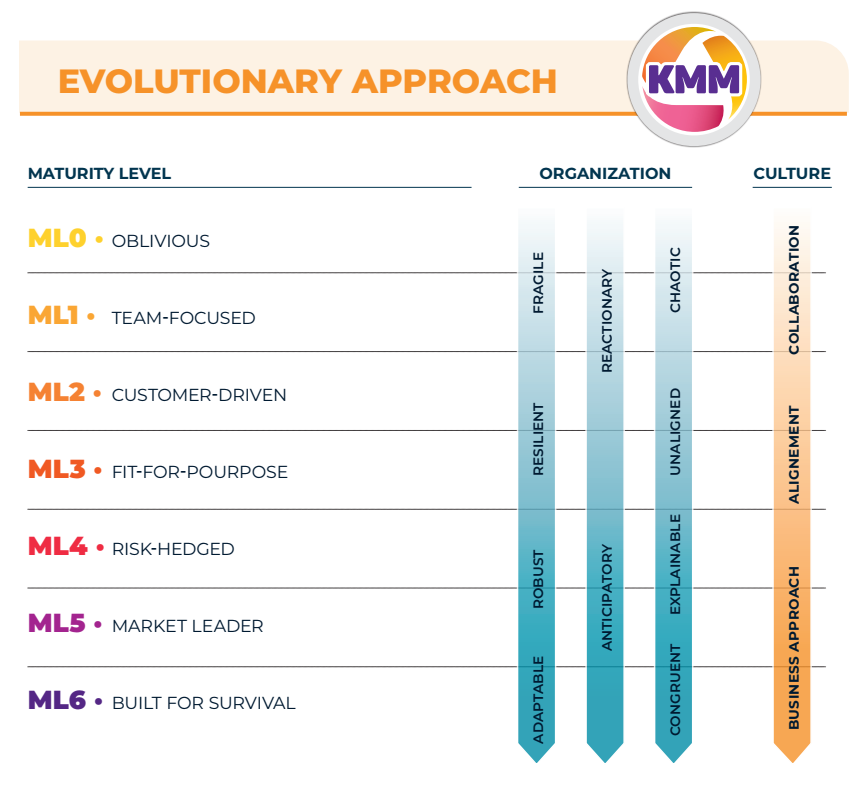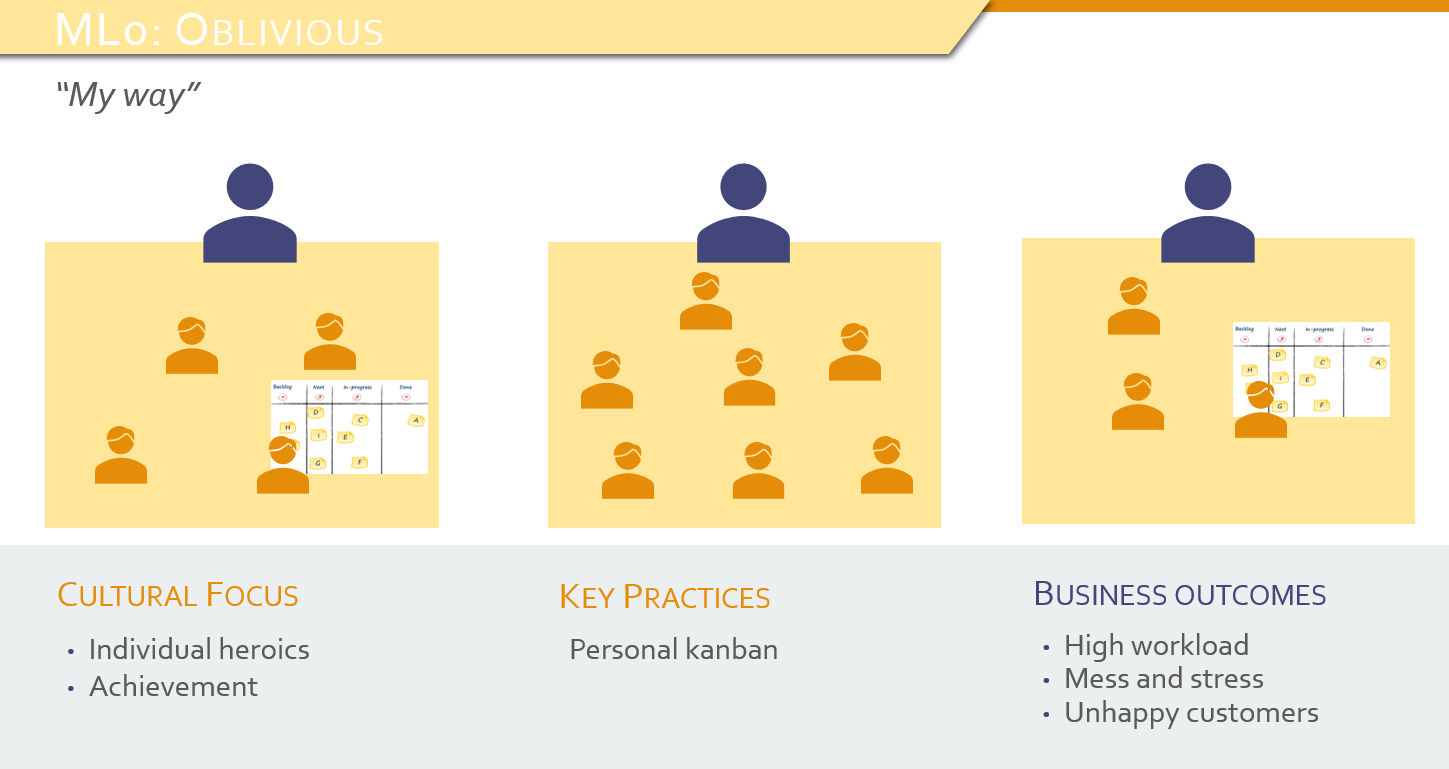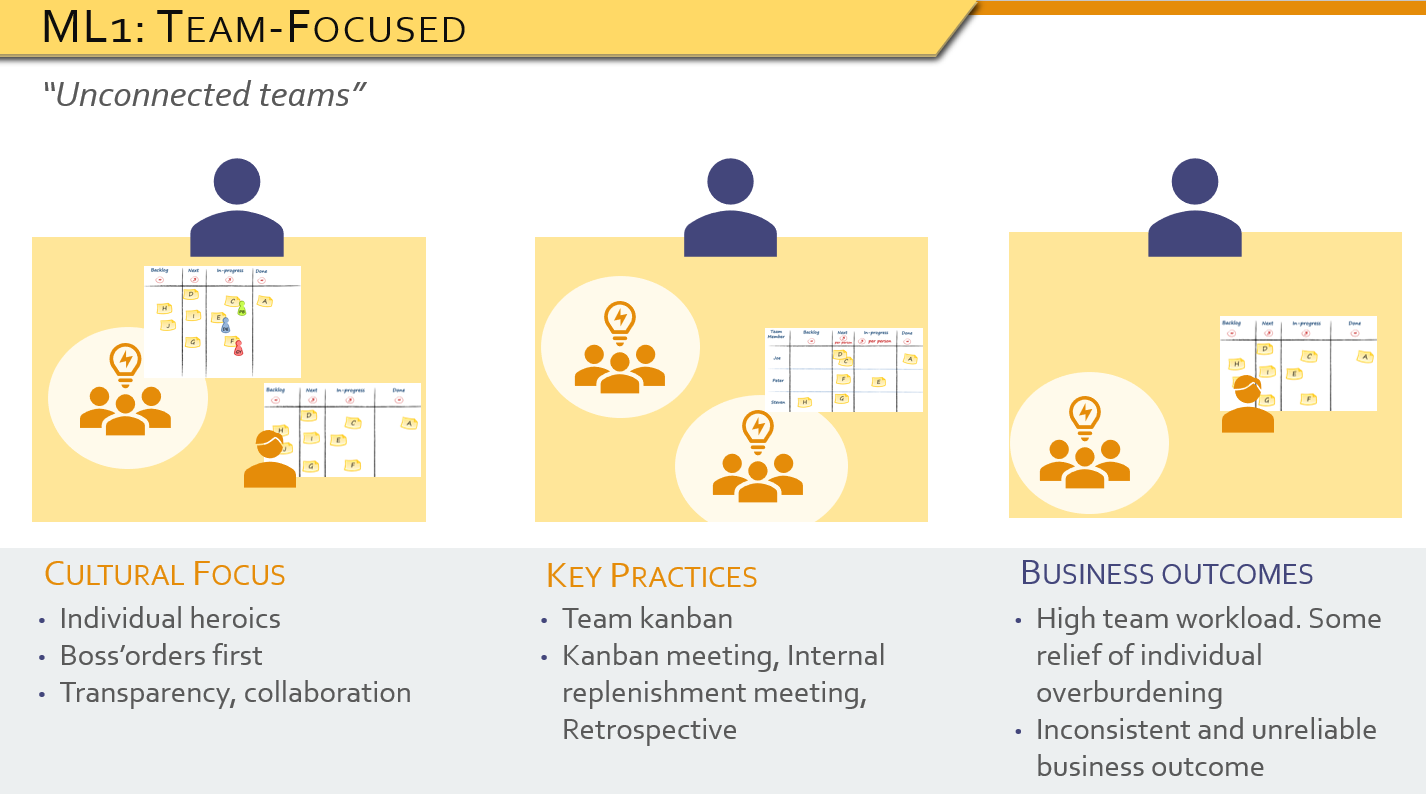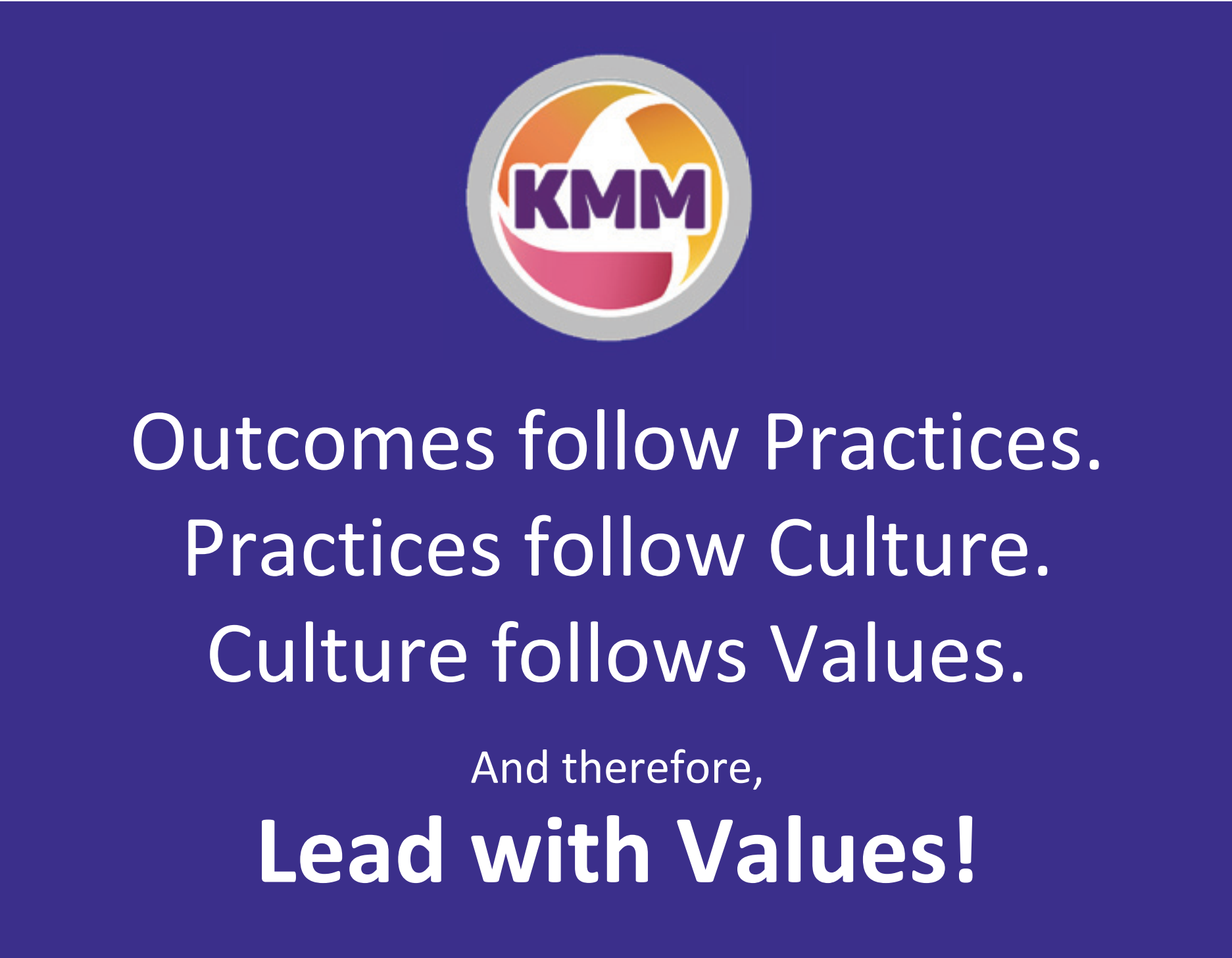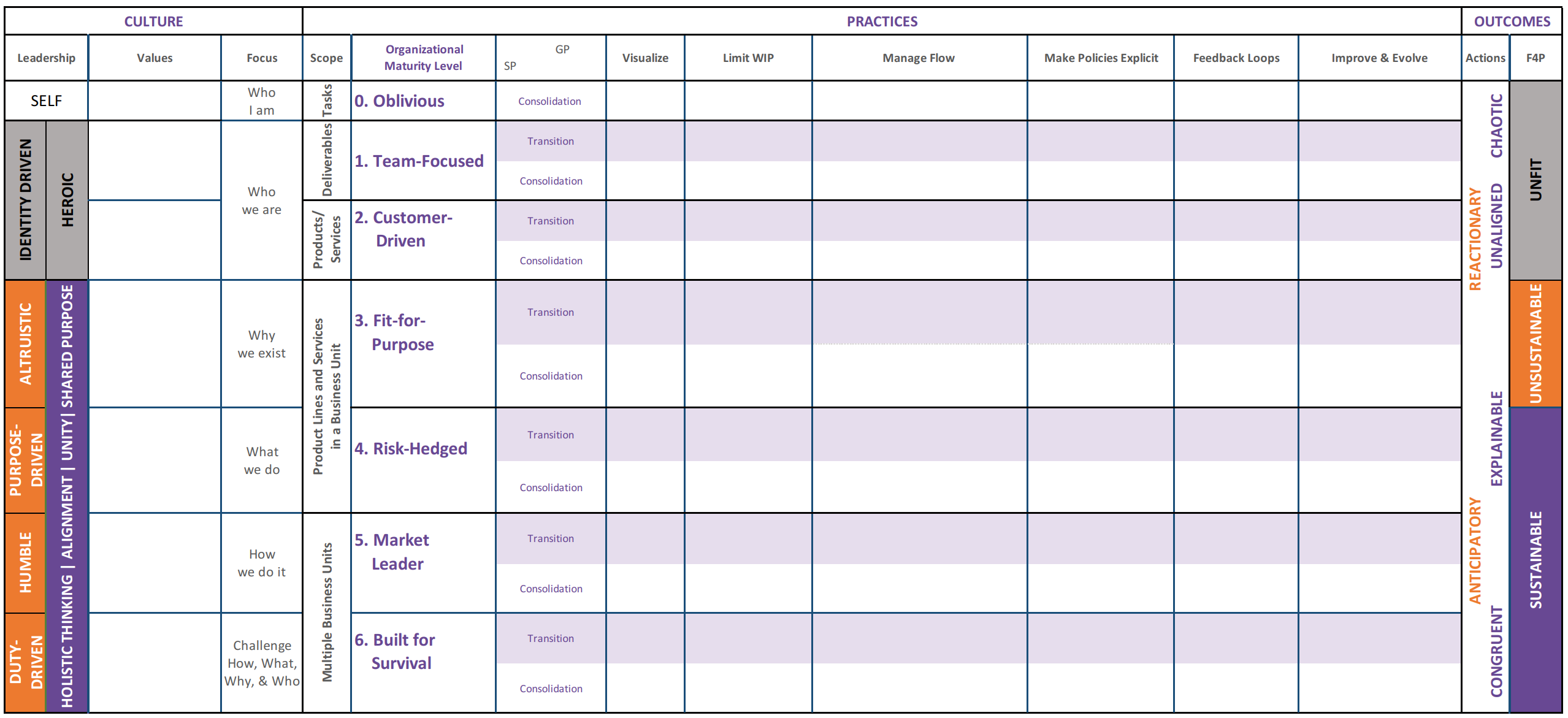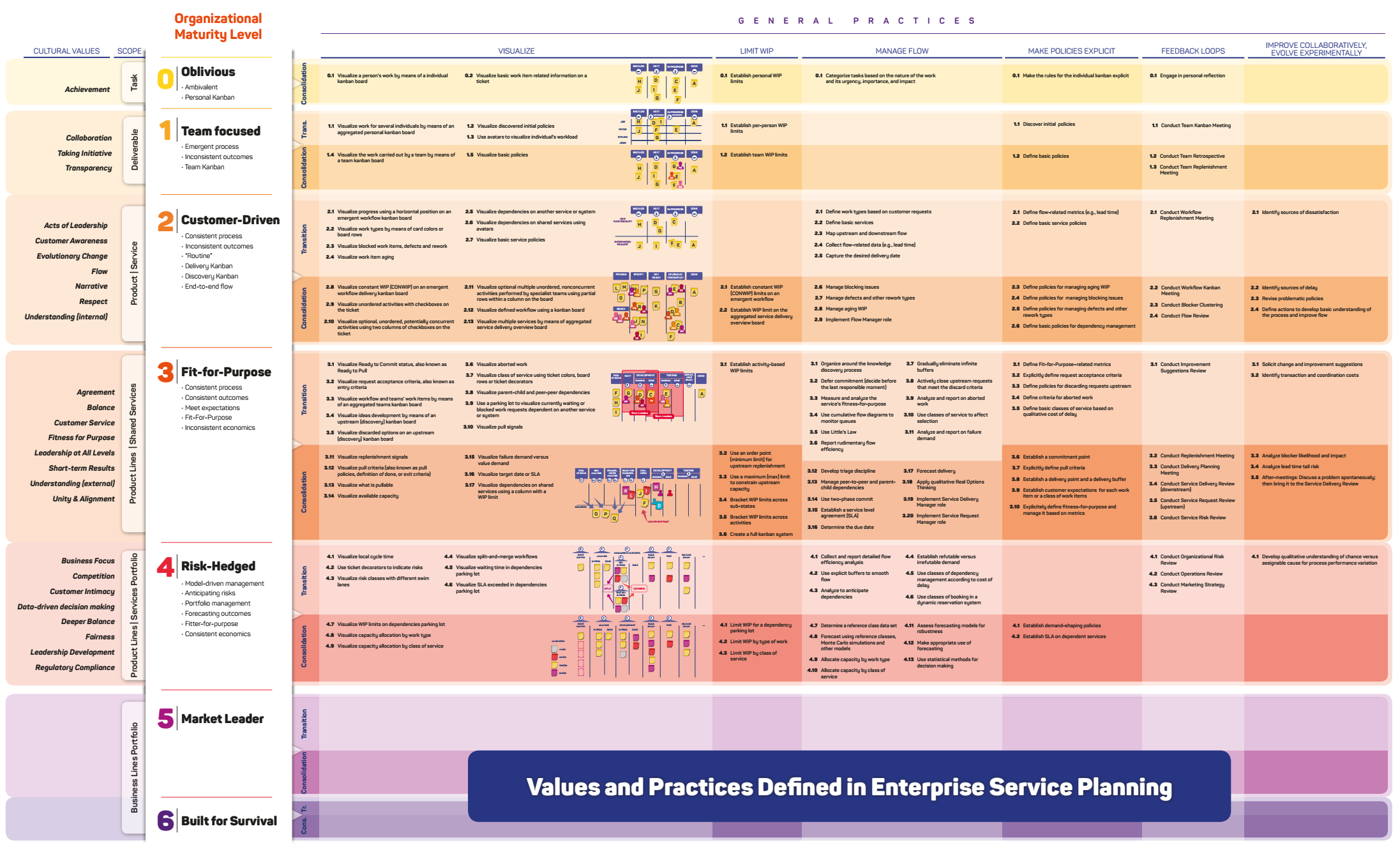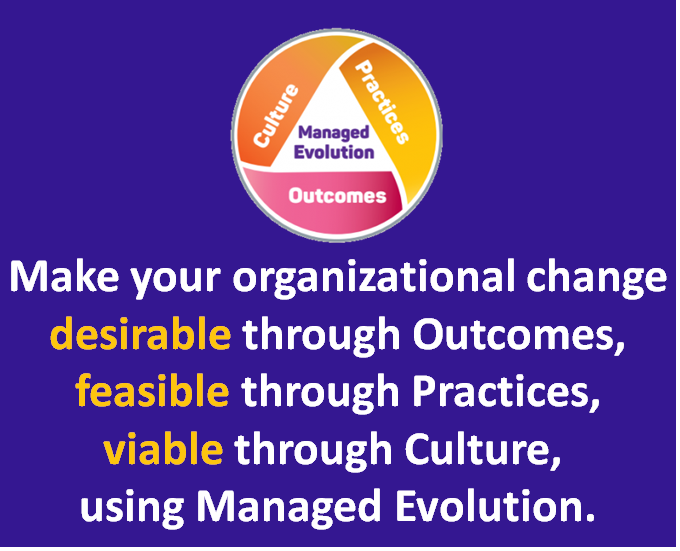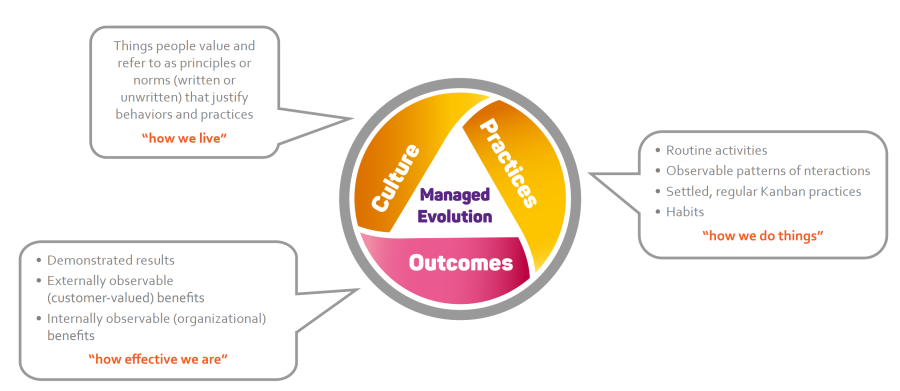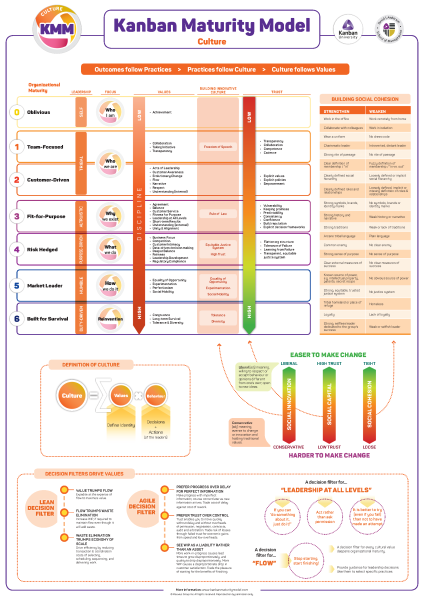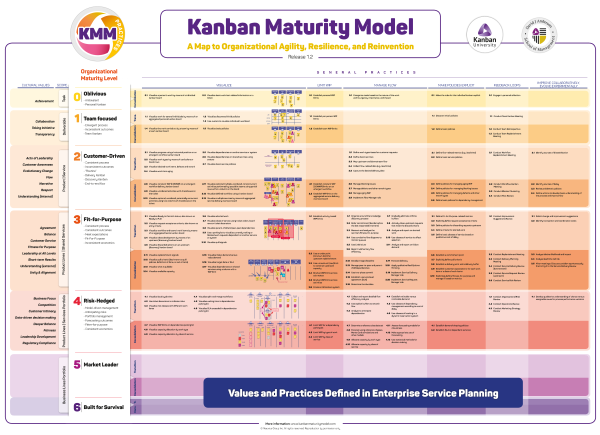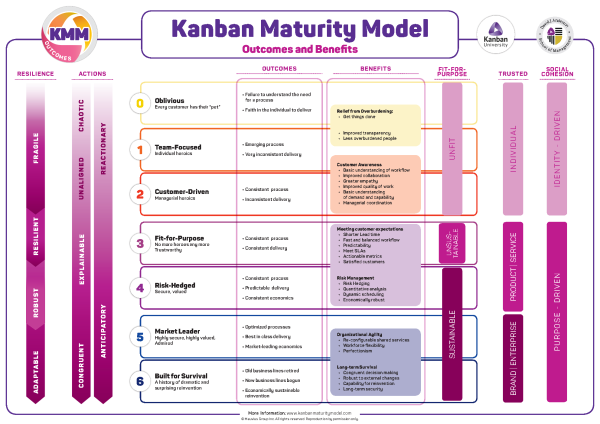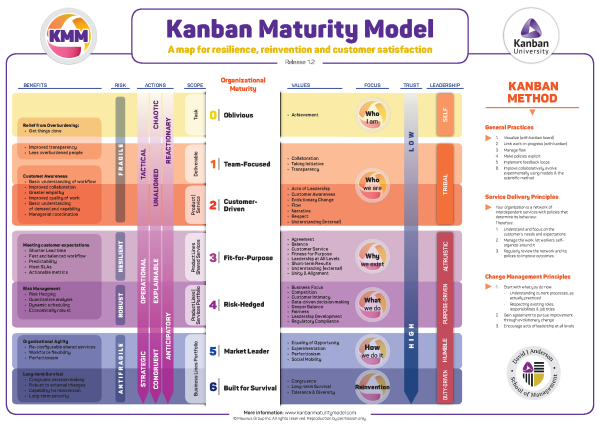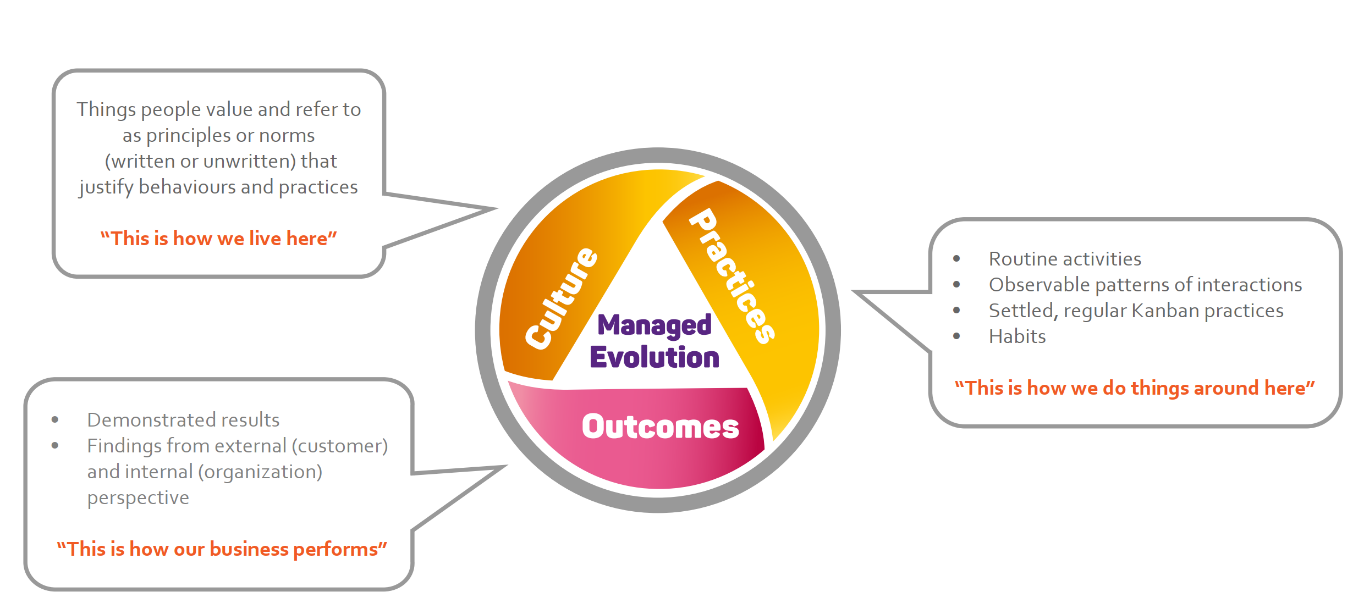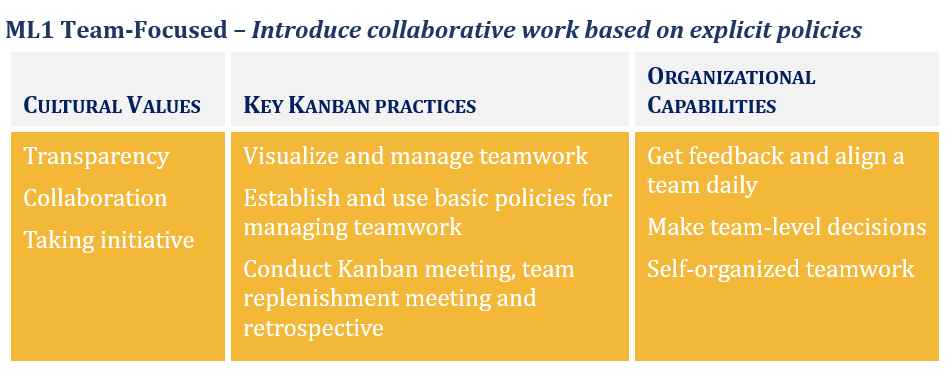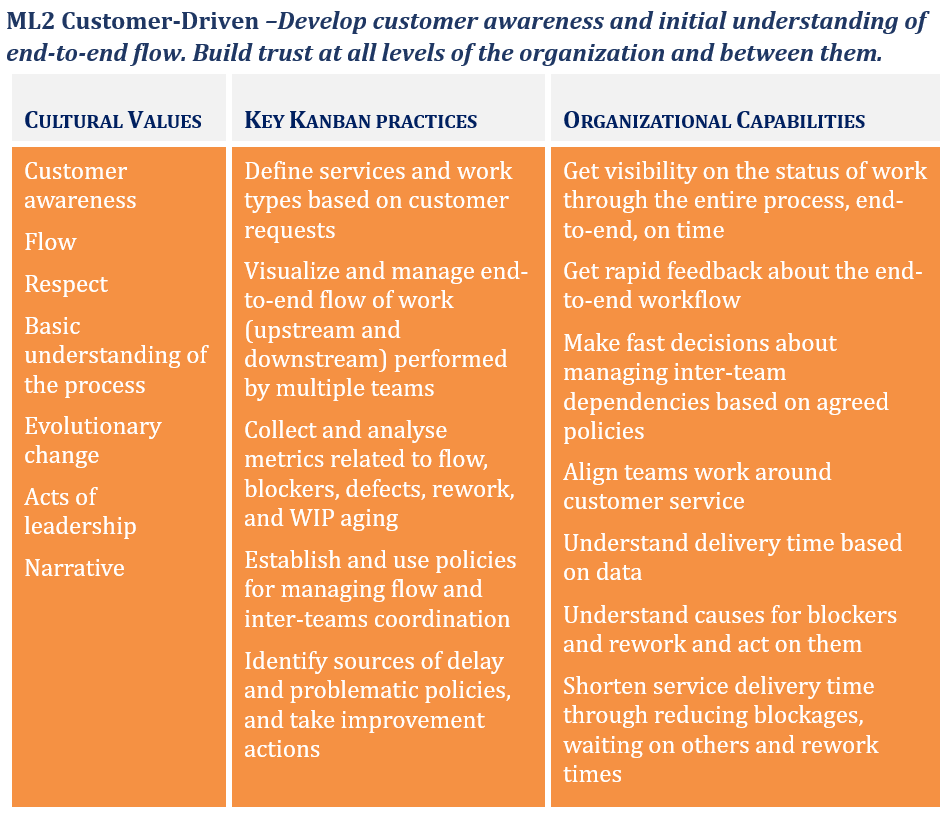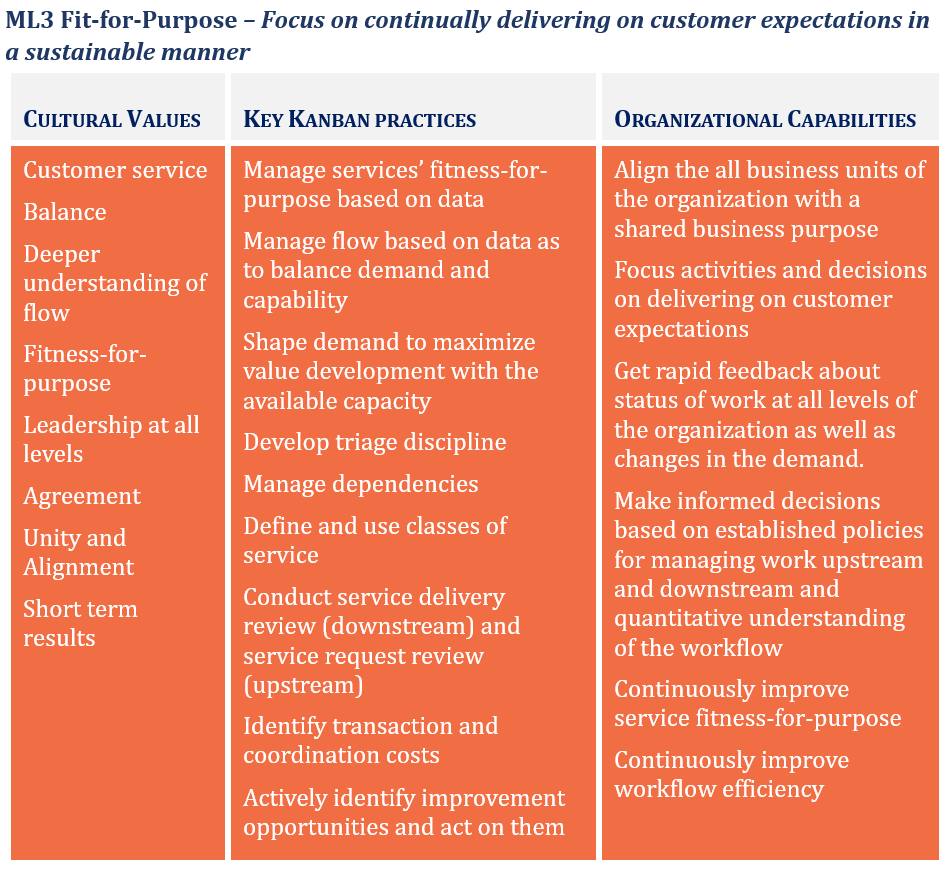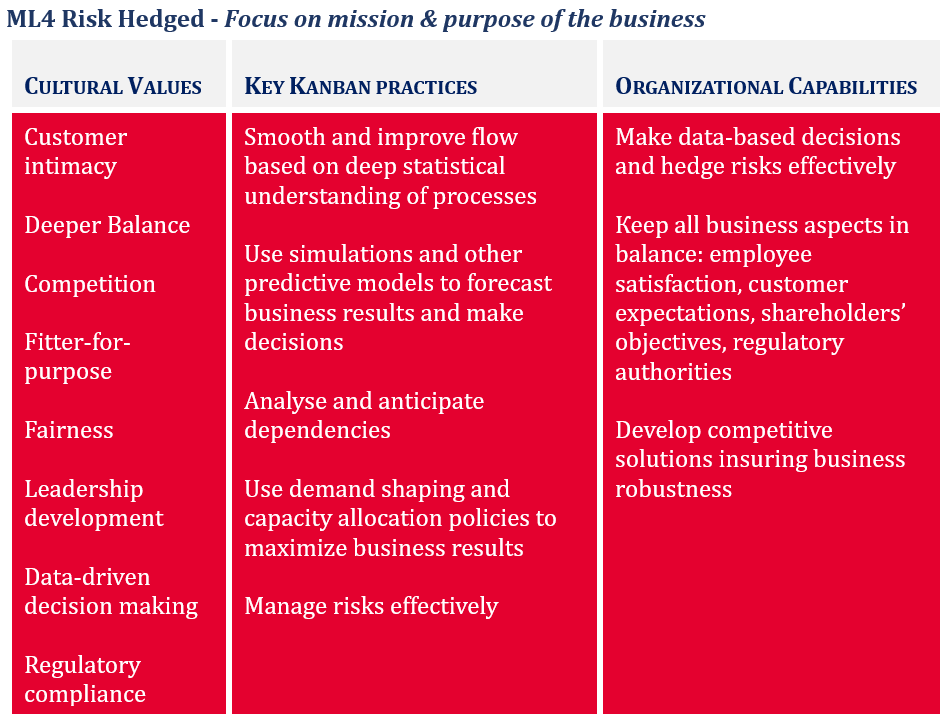Nowadays nobody doubts that adopting an agile approach to project management is the only way to survive and thrive. In the previous article “3 Kanban tactics for taking control over your projects and increase organizational agility in less than a year” we describe what Kanban practices you can integrate in your management routines to achieve greater organizational agility; namely, to make your organization work aligned around a purpose, respond rapidly and adequately to changes in your projects, resolve obstacles quickly, meet deadlines and customer requirements continually and in a sustainable manner.
The Kanban Project and Portfolio Management poster visualizes how your project and portfolio management practices develop together with the capabilities of your organization. The steps we describe follow the Kanban Maturity Model – a guiding map for companies who seek a gradual approach to greater agility and resilience.
Let us see them in some more details.
ML1 Team Focused – Get visibility and coordination of teamwork

A ML1 organization is focused on developing the skills of the teams to work transparently and collaboratively on their assignments.
Visualize development flows
If the entire team is working on a given project, the team board visualizes the state of the modules (deliverables/ features) that are part of the project. In case that different specialist teams are involved in the project, e.g. industrial engineers, software developers, and mechanics, the Deliverable board visualizes the state of work conducted by a given specialist team, and a Project/ Product level board would be used to visualize the overall state of all project deliverables.
As maturity increases organizations start using a Multi-project board at which each ticket represents a project. In addition, the horizontal and vertical axes of the In Progress area are used to visualize how close a project is to delivery (horizontal axis) and to its due date (vertical axis).
Feedback loops
Teams at a ML1 organization typically make daily Kanban and periodic retrospective meetings. The Project/Product managers conduct project monitoring and planning meetings, usually weekly or bi-weekly. Team Leads or entire teams take part in them. On a regular basis the Project/Product Manager participates in a Multi-project monitoring (status) meeting.
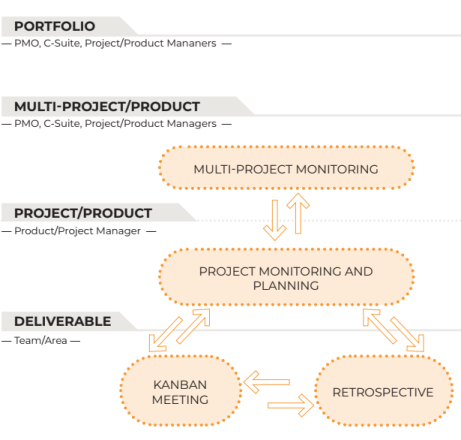
Metrics
Flow-related metrics are not typically used at ML1.
Outcomes
The visibility in the teamwork, the agreed initial policies for doing the work, and the feedback obtained at regular short time intervals are all essential elements to improve team coordination and performance.
Nevertheless, from customers perspective, the product quality and its on-time delivery depend completely on the skills, motivation and the ability of the team to handle the issues and changes that appear in the course of the project development. Some teams would manage to fulfil their customer requirements, even if this requires extra effort and long working hours. However, many will suffer from unexpected problems, or dependencies on other teams or suppliers. Therefore, customers typically see a ML1 organization as unpredictable and unreliable. From inside, team members often complain from overburdening and inability to cope with changing priorities and meet project deadlines and budget requirements.
ML2 Customer-Driven – See end-to-end project workflow; Start cutting sources of delay
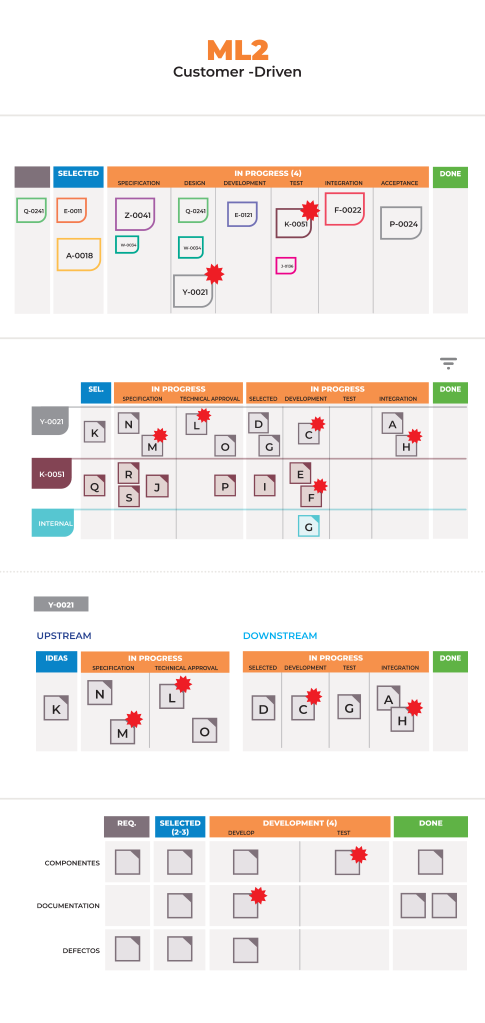
At ML2 you connect teams, visualize and manage the end-to-end project workflow, define and handle appropriately different customer demand, and you take the first actions to reduce delays and budget overruns.
Visualize and manage development flows
The In-Progress area on the team kanban board shows the stages of the process. This gives you instant information about the progress of each work item. In addition, teams start visualizing blockers, rework and work item aging. Thus, they resolve project issues quickly and hence reduce delays and extra costs.
Having visibility in the state of work and the impediments in the workflow at team, project and multi-project level provides you valuable feedback for planning and making decisions related to any issue that affects a single or several projects. Teams get better in coordinating their activities across projects and develop stronger understanding of the customer. Using a tool like Kanbanize, will give you this information in real time, that is the entire project team will be quickly aware of the actual situation of the project and will be able to propose appropriate actions.
Metrics
Flow-related data supplies useful information about the real capability of the system, the characteristics and the volume of the demand. You get a quantitative understanding of how much it really takes you to develop a deliverable of certain type (e.g. component, documentation, incident), or an entire project. This is the objective input you need to get better in estimating and scheduling.
You also become aware of the impact of blockages and dependencies on others on the completion of project deadlines and budget. This deeper understanding of your process motivates the introduction of basic policies for managing work across states, teams and business units. You also come to establishing common criteria for prioritizing work considering the customer needs and the capability of the system (compound of the people and machines that develop the project work).
Understanding the causes for the blockers and their impact on the project delivery time and budget is the first step to introducing effective risk management too. Your organization can already think of how to prevent at least the most frequently occurring sources of delays and budget overruns.
If you seriously aspire to see that your projects meet their schedule and budget constraints, your teams are capable to adequately respond to changes in customer requirements, and achieve this consistently, ML2 is your starting point.
Only in very large organizations or complex projects with long life cycle you might need to start from ML1. In any case, if your problem is long project delivery times, you have to know what impedes project progress while time keeps running, and you have to learn to manage these issues. If you lack visibility in the state of the project work, you should visualize all aspects of the work you carry on and make sure that thisinformation is available in real time. If your customers complain from delays, you have to know how much it really takes you to deliver a given type of work. Not how much time you estimate, but how much it really takes, including all the interruptions and time for rework, i.e. from the moment you start working on it until it is finally delivered to the customer.
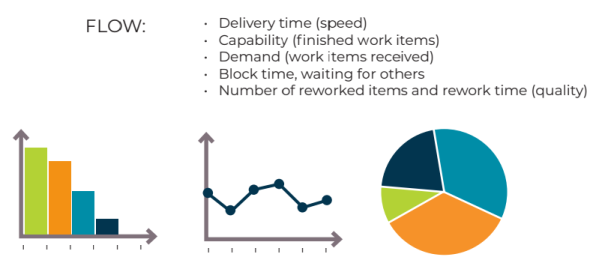
Feedback loops
The focus on managing the end-to-end project workflow, the usage of flow-related metrics, and the better understanding of your customer demand and system (team/organization) capabilities define the topics for your meetings and reviews. As a result, you take control on your projects, improve the cross-team communication and coordination, and see that project delays and budget overruns get reduced.
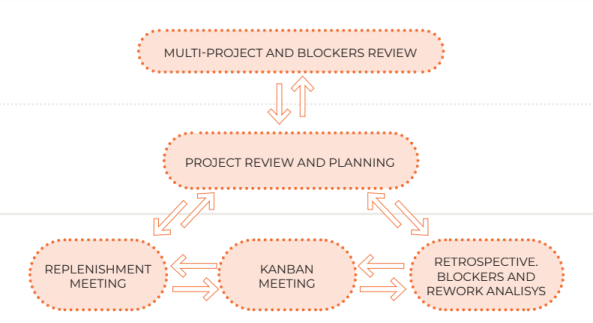
You and your people can make it. You desire to deliver projects on time, see customers happy and feel that you keep under control everything you do as a team, as an organization. You are the people who best understand your work. You have the guidelines and tools for putting the right practices in place. And you all are going to be proud and happier working in an organization that values the understanding of your customers, maintaining steady and sustainable flow, obtaining fast data-and-facts feedback, react quickly and adequately to changes and learn systematically from your processes and experience. Take initiative. Make your project work flow.
ML3 Fit-for-purpose – Balance workflow across project/product lines
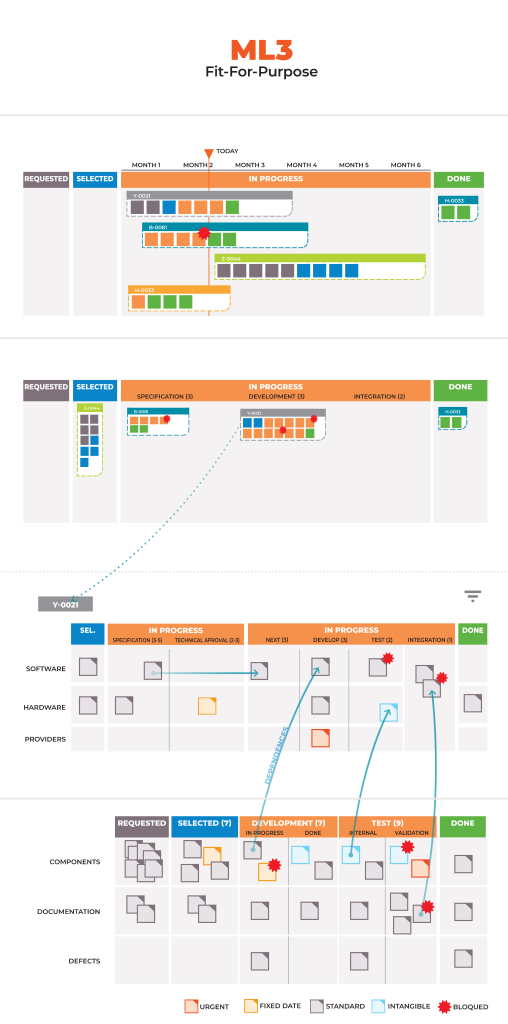
ML3 builds on what you have developed at ML2. At ML3 you get full control on your projects thanks to several key practices:
Visualize and manage development flows
- You start using full kanban systems with agreed criteria for accepting and managing work items, and this helps creating a sustainable and predictable flow.
- You use triage and class of service policies that allow you to shape demand, making sure that all customer expectations are met and you have acquired the desired flexibility to adapt to unexpected changes in the project context.
- You visualize parent-child and pair-to-pair dependencies and use their understanding to make appropriate decisions at all levels. You can adjust the practices for managing internal dependencies and apply them to managing your suppliers and reduce the uncertainty in subcontracting part of the project work.
- You get a deeper understanding of your processes, their transaction and coordination cost, the cost of defects, cost of delay and flow efficiency. This allows you to start defining pragmatic actions to see improvement in economic results.
Metrics
- Your workflow is stable and your flow-related data allow you to rely on your schedule and respond with confidence to customer questions about delivery time.
- You introduce additional metrics that help you identify process improvements that will increase flow efficiency, product quality and economic results
- You define and use KPIs to make sure you manage well your customer expectations
- You use indicators of organizational health to ensure long-term sustainability of the adopted practices and cultural values

Feedback loops
- The communication across the entire organization is seamless and fast. Teams and business units act in an aligned manner.
- All feedback from the kanban boards, data analysis and system reviews is used for making informed decisions.
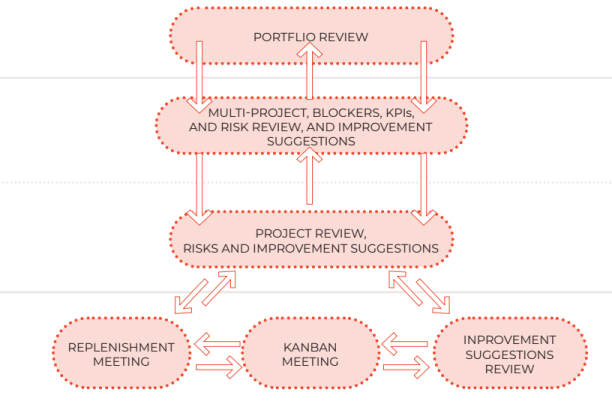
Outcomes
- You get better at addressing risks and responding to uncertainty thanks to your deeper understanding of how your organization works as a system, your real capability, what your customers expect and how the market behaves.
- Your purpose-driven culture is sustained by effective practices and tools and together they strengthen your business outcomes.
- Your customers are happy because you adjust rapidly to changes in their requirements and deliver good product quality on time
- Your people appreciate that “they can go home with no worries because the process is under control and they know where to continue from the next day” (words of a client of ours)
ML4 Risk-Hedged – Improve project portfolio economics
At ML4 you will visualize better dynamic capacity allocation to take more control on your project portfolio. You improve your risk identification, analysis and prevention skills. In addition, you will take advantage from your deep understanding of your critical processes to eliminate waste and improve process efficiency. Altogether, you will achieve greater economic results that will allow you to develop further your market leadership and ability to reinvent.
The vast majority of organizations are still at maturity level 1, some approaching ML2 or heading towards ML3. Therefore, and for the sake of article length, we are going to get deeper into ML4 in future articles.
Summary
Resuming, Kanban is your ally for getting your projects under control. It does not substitute your project management method. However, you can upgrade your project management routines with Kanban practices to address effectively the problems you face in daily basis.
Do not put your projects at risk trying to introduce drastic changes to your management practices at once. Follow the evolutionary approach of the Kanban Maturity Model to achieve improvements gradually, avoiding resistance to change.
Enterprise culture evolves together with the management skills and maturity. Read more about this aspect of organizational development in Kanban Maturity Model – Start Change With Heart.
Teodora Bozheva
Accredited Kanban Trainer & Consultant
Co-author of the Kanban Maturity Model
www.berriprocess.com
Related posts:
- 3 Kanban tactics for taking control over your projects and increase organizational agility in less than a year
- Kanban Maturity Model – Start Change With Heart.
P.S. Follow us for more pragmatic guidance on developing agility of project organizations.

